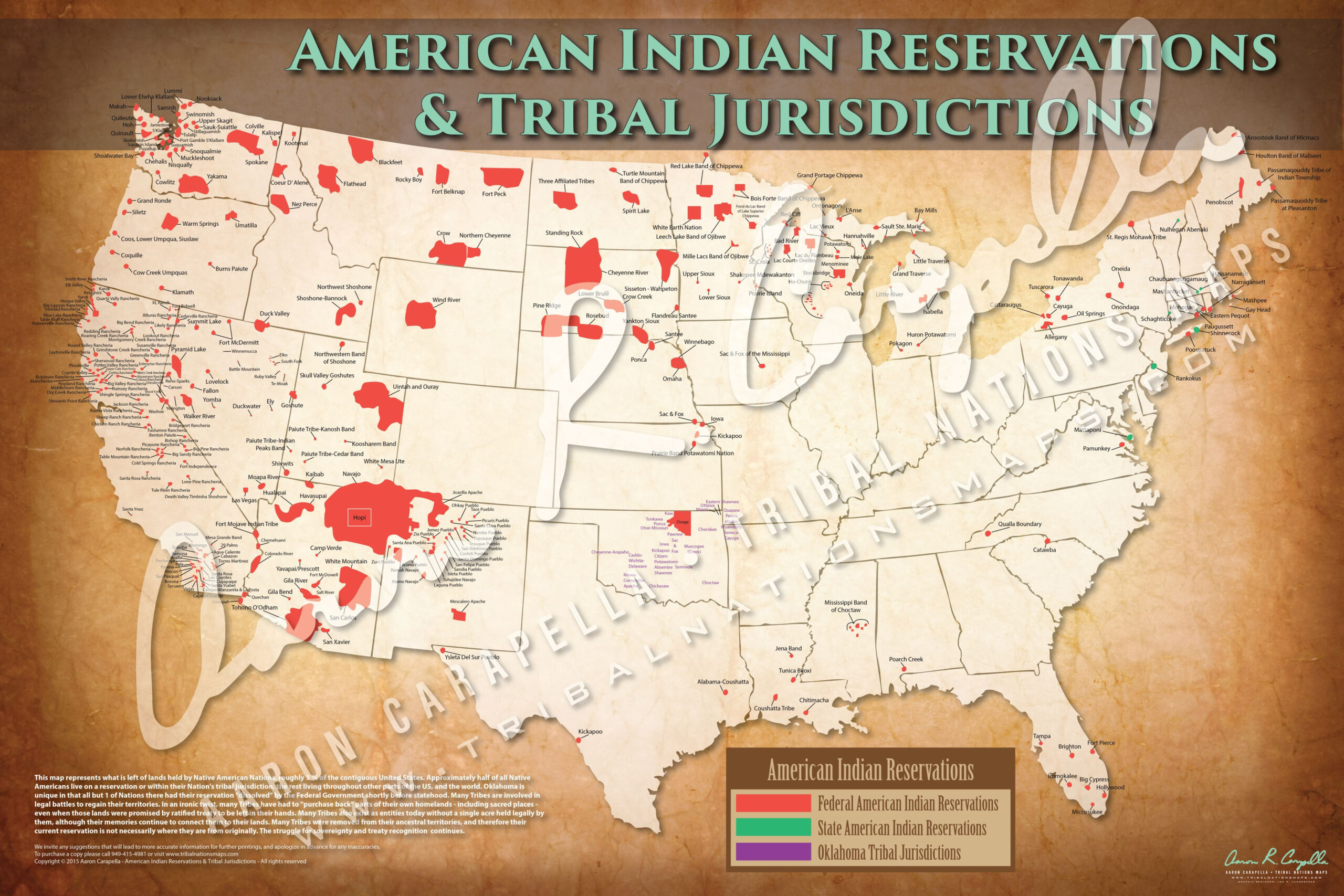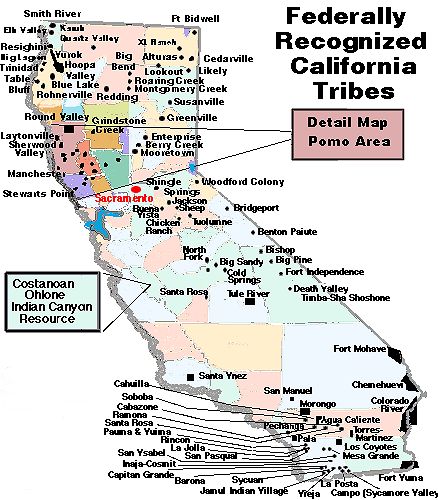California’s Native Lands: Exploring the Largest Reservations
California’s Native Lands: Exploring the Largest Reservations

California, a state known for its sunshine and Hollywood glamour, also boasts a rich and complex history deeply intertwined with its indigenous people. The state is home to over 100 federally recognized tribes, many of whom reside on reservations, a testament to their resilience and cultural legacy.
While some reservations are small, others span vast swaths of land, offering a glimpse into the unique cultural practices, traditions, and challenges faced by these communities. This article delves into the largest reservations in California, exploring their history, culture, and the ongoing efforts to preserve their heritage.
Related Articles: California’s Native Lands: Exploring the Largest Reservations
- Unveiling the Chippewa's Abode: Discoveries and Insights
- Unveiling the Enchanting Tapestry of Native American Tribes in Sedona
- Unveiling the Enigmatic World of Virginia Cherokee Surnames
- Unveiling the Largest Indian Tribes in the US: Uncover Hidden Histories and Cultural Treasures
- Unveiling the Allure of Indian Casinos in South Dakota: Discoveries and Insights Await
1. The Largest: The Pala Band of Mission Indians
Nestled in the rolling hills of northern San Diego County, the Pala Band of Mission Indians reservation is the largest in California, covering a whopping 125,000 acres. The Pala Band, whose name comes from the Spanish word "pala" meaning shovel, has a long and fascinating history dating back centuries.
Their ancestors were the original inhabitants of the area, living in harmony with the land. The arrival of Spanish missionaries in the 18th century brought about dramatic changes, leading to the establishment of the Pala Mission in 1812. Despite the challenges of colonization, the Pala Band persevered, maintaining their cultural identity and traditions.
Today, the Pala Band is a thriving community with a strong sense of self-governance. They operate a variety of businesses, including a casino, a golf course, and a winery, contributing significantly to the local economy. The Pala Band is also committed to preserving their heritage, operating a museum and cultural center that showcases their rich history and traditions.
2. The Sovereign Nation of the Cabazon Band of Mission Indians
Located in the heart of the Coachella Valley, the Cabazon Band of Mission Indians reservation spans a remarkable 51,000 acres. The Cabazon Band, whose name comes from the Cahuilla word "cabazone" meaning "place of the willow," has a deep connection to the land, dating back thousands of years.
Their ancestors were skilled hunters, gatherers, and farmers, living in harmony with the desert environment. The arrival of Spanish missionaries in the 18th century led to the establishment of the San Gorgonio Mission, but the Cabazon Band continued to maintain their cultural practices.
Today, the Cabazon Band is known for its self-sufficiency and economic success. They operate a casino, a golf course, and a variety of other businesses, generating revenue that supports the community and its programs. The Cabazon Band is also actively involved in environmental protection, working to preserve the natural beauty of their ancestral lands.

3. The Pechanga Band of Luiseno Indians
The Pechanga Band of Luiseno Indians reservation, located in Temecula Valley, covers a sprawling 45,000 acres. The Pechanga Band, whose name comes from the Luiseno word "pechanga" meaning "place of the sycamore," has a rich cultural heritage deeply rooted in the land.
Their ancestors were skilled basket weavers, potters, and beadworkers, creating intricate and beautiful works of art. The arrival of Spanish missionaries in the 18th century led to the establishment of the San Luis Rey Mission, but the Pechanga Band continued to maintain their cultural practices.
Today, the Pechanga Band is a thriving community with a strong sense of identity. They operate a casino, a resort, and a variety of other businesses, contributing significantly to the local economy. The Pechanga Band is also committed to preserving their heritage, operating a museum and cultural center that showcases their rich history and traditions.
4. The Morongo Band of Mission Indians
Nestled in the San Bernardino Mountains, the Morongo Band of Mission Indians reservation covers 27,000 acres. The Morongo Band, whose name comes from the Serrano word "morongo" meaning "a place of running water," has a long and fascinating history dating back centuries.
Their ancestors were skilled hunters, gatherers, and farmers, living in harmony with the mountain environment. The arrival of Spanish missionaries in the 18th century led to the establishment of the San Bernardino Mission, but the Morongo Band continued to maintain their cultural practices.
Today, the Morongo Band is a thriving community with a strong sense of self-governance. They operate a casino, a hotel, and a variety of other businesses, generating revenue that supports the community and its programs. The Morongo Band is also actively involved in environmental protection, working to preserve the natural beauty of their ancestral lands.
5. The Santa Ynez Band of Mission Indians
Located in the Santa Ynez Valley, the Santa Ynez Band of Mission Indians reservation covers 18,000 acres. The Santa Ynez Band, whose name comes from the Chumash word "Santa Ynez" meaning "holy Agnes," has a deep connection to the land, dating back thousands of years.

Their ancestors were skilled hunters, gatherers, and fishermen, living in harmony with the coastal environment. The arrival of Spanish missionaries in the 18th century led to the establishment of the Santa Ynez Mission, but the Santa Ynez Band continued to maintain their cultural practices.
Today, the Santa Ynez Band is a thriving community with a strong sense of identity. They operate a casino, a golf course, and a variety of other businesses, contributing significantly to the local economy. The Santa Ynez Band is also committed to preserving their heritage, operating a museum and cultural center that showcases their rich history and traditions.
Challenges and Triumphs
The history of California’s Native Americans is marked by both hardship and resilience. The arrival of European settlers in the 18th century brought about dramatic changes, leading to the displacement of Native populations and the loss of their traditional lands.
The establishment of reservations, while intended to protect Native communities, often resulted in confinement and limited self-governance. Despite these challenges, California’s Native Americans have persevered, maintaining their cultural identity and traditions.
In recent decades, there has been a growing movement to recognize the rights of Native Americans and to restore their sovereignty. The passage of the Indian Gaming Regulatory Act in 1988 allowed tribes to operate casinos on their reservations, providing a much-needed source of revenue and economic empowerment.
Preserving the Legacy
California’s largest reservations play a vital role in preserving the state’s rich Native American heritage. They offer a glimpse into the unique cultures, traditions, and languages of these communities, providing opportunities for education and cultural exchange.
Many reservations operate museums, cultural centers, and art galleries that showcase the artistry and craftsmanship of Native Americans. They also host powwows, festivals, and other events that celebrate their traditions and bring together communities from across the state.
The Future of California’s Native Lands
The future of California’s Native lands is intertwined with the ongoing efforts to preserve their heritage and to achieve greater self-determination. The fight for sovereignty, land rights, and cultural recognition continues, driven by the determination of Native communities to reclaim their rightful place in the state’s history and future.
FAQ about Largest Indian Reservations in California
Q: What is the largest Indian reservation in California?
A: The Pala Band of Mission Indians reservation is the largest in California, covering 125,000 acres.
Q: What are some of the cultural practices and traditions of the largest reservations?
A: Each tribe has its own unique cultural practices and traditions, but some common ones include basket weaving, pottery, beadwork, storytelling, and dancing.
Q: What are some of the economic activities on the largest reservations?
A: Many reservations operate casinos, resorts, golf courses, and other businesses, generating revenue that supports the community and its programs.
Q: What are some of the challenges faced by Native Americans in California?
A: Native Americans in California face a number of challenges, including poverty, lack of access to healthcare, and limited educational opportunities.
Q: What are some of the efforts being made to preserve Native American culture and traditions?
A: Many tribes are working to preserve their heritage through museums, cultural centers, language programs, and traditional arts and crafts.
Q: What is the significance of the Indian Gaming Regulatory Act?
A: The Indian Gaming Regulatory Act allowed tribes to operate casinos on their reservations, providing a much-needed source of revenue and economic empowerment.
Q: What is the future of California’s Native lands?
A: The future of California’s Native lands is intertwined with the ongoing efforts to preserve their heritage and to achieve greater self-determination.
The largest reservations in California stand as a testament to the resilience and cultural vibrancy of Native Americans. They offer a window into a rich and diverse history, showcasing the enduring traditions and cultural heritage of these communities. As we learn about the history and culture of these reservations, we gain a deeper understanding of the state’s past and its ongoing journey toward reconciliation and recognition.

Closure
Thus, we hope this article has provided valuable insights into California’s Native Lands: Exploring the Largest Reservations. We thank you for taking the time to read this article. See you in our next article!
